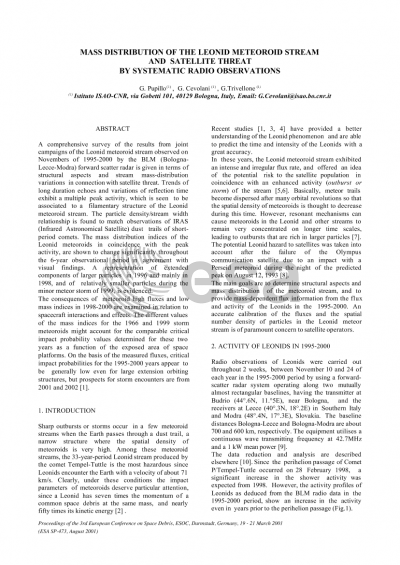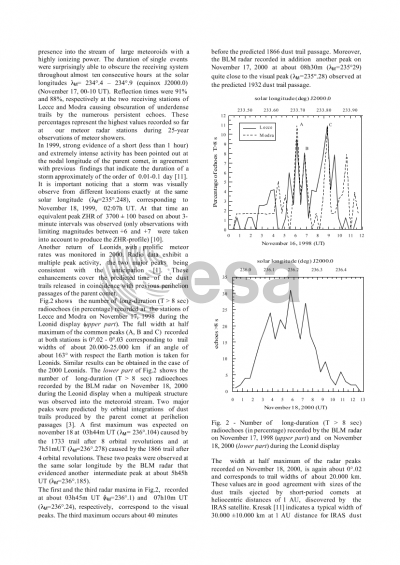Document details

Abstract
A comprehensive survey of the results from joint campaigns of the Leonid meteoroid stream observed on Novembers of 1995-2000 by the BLM (Bologna-Lecce-Modra) forward scatter radar is given in terms of structural aspects and stream mass-distribution variations in connection with satellite threat. Trends of long duration echoes and variations of reflection time exhibit a multiple peak activity, which is seen to be associated to a filamentary structure of the Leonid meteoroid stream. The particle density/stream width relationship is found to match observations of IRAS (Infrared Astronomical Satellite) dust trails of short-period comets. The mass distribution indices of the Leonid meteoroids in coincidence with the peak activity, are shown to change significantly throughout the 6-year observational period in agreement with visual findings. A representation of extended components of larger particles in 1996 and mainly in 1998, and of relatively smaller particles during the minor meteor storm of 1999, is evidenced. The consequences of meteoroid high fluxes and low mass indices in 1998-2000 are examined in relation to spacecraft interactions and effects. The different values of the mass indices for the 1966 and 1999 storm meteoroids might account for the comparable critical impact probability values determined for these two years as a function of the exposed area of space platforms. On the basis of the measured fluxes, critical impact probabilities for the 1995-2000 years appear to be generally low even for large extension orbiting structures, but prospects for storm encounters are from 2001 and 2002.
Preview







